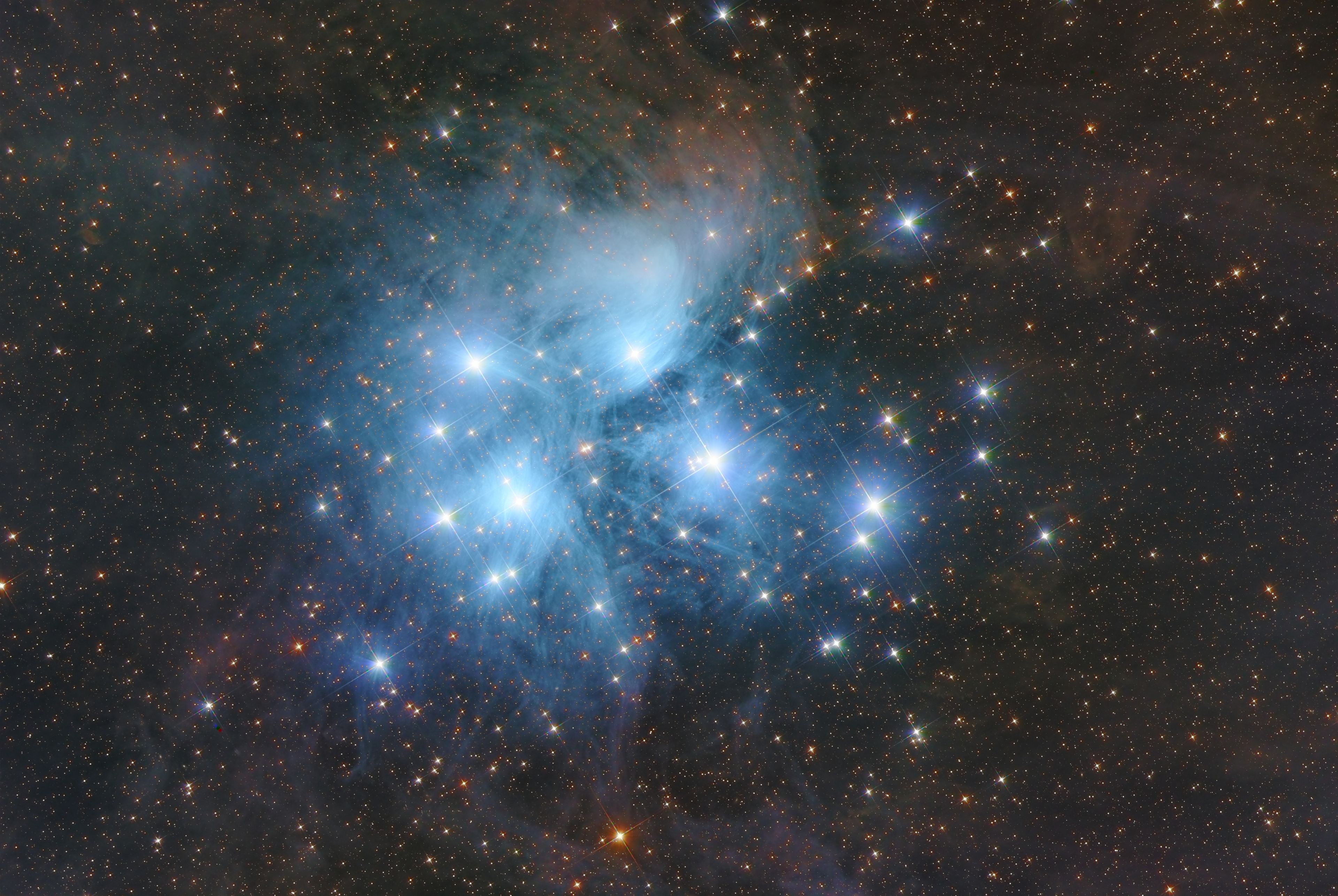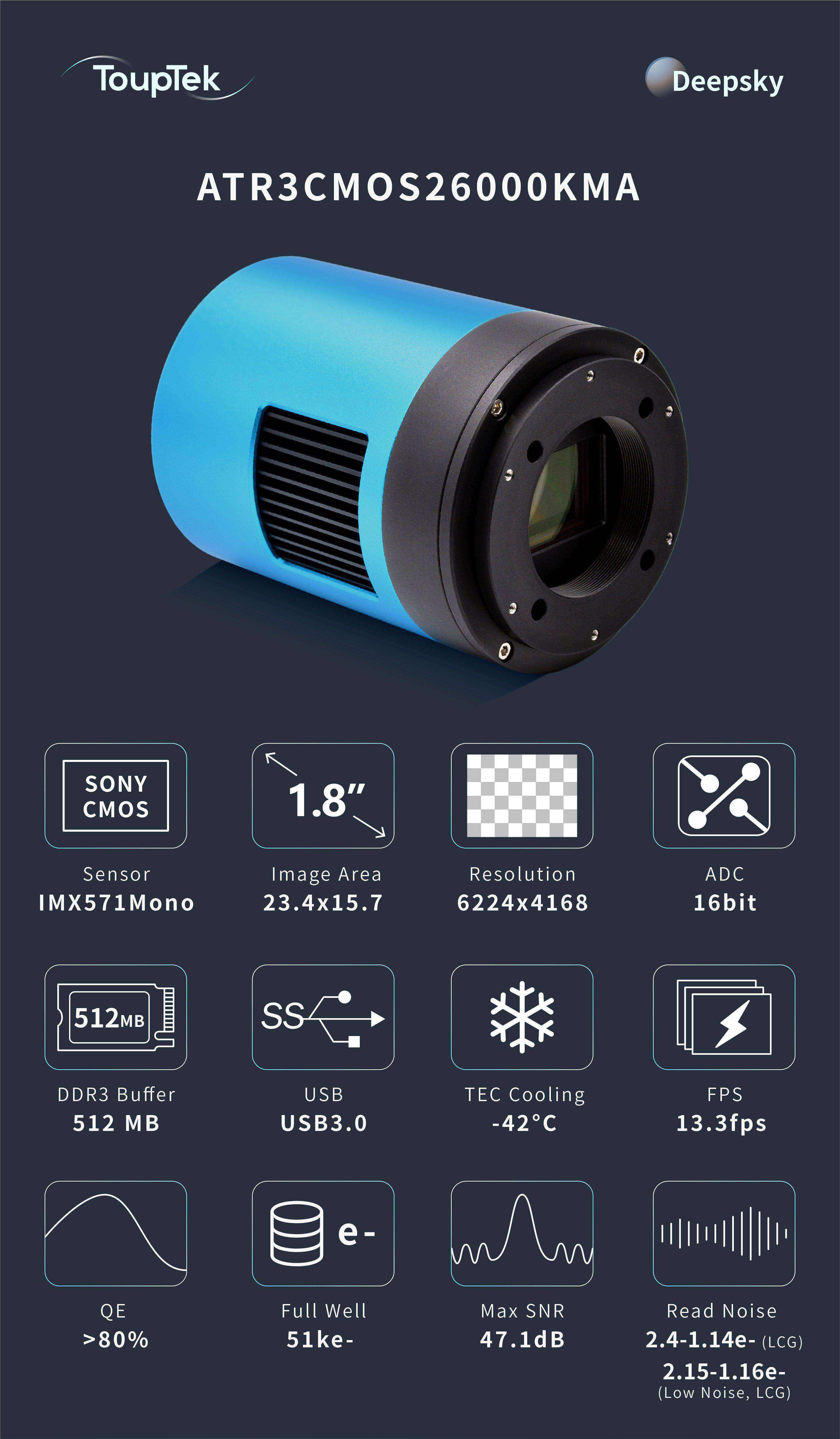Amidst the vast expanse of the nighttime sky, the Pleiades Star Cluster, or M45 as it is known to astronomers, serves as a celestial landmark that has fascinated stargazers for millennia. Residing in the constellation of Taurus, this cluster is not just a group of stars; it's a cosmic storybook, revealing tales of astronomy, mythology, and the intrinsic beauty of the universe. Let's embark on a journey to explore the Pleiades, a constellation cluster that has captivated human imagination across cultures and ages.

photographer:有文化的包工头
camera:ToupTek ATR3CMOS26000KPA
Guide Cameras:ToupTek GPCMOS02000KMA
telescope:TakahashiE-130D
Equatorial mount:CEM70
The Pleiades, often referred to as the "Seven Sisters," is one of the nearest and most easily recognizable star clusters from Earth, lying at a distance of about 444 light-years away. Although the name suggests seven stars, the cluster actually contains hundreds of stars, tightly bound by gravitational forces. To the naked eye, six or seven of these stars are readily visible, depending on the observer's location and eyesight, but telescopes reveal a much denser population of celestial bodies.
What makes the Pleiades particularly striking is the relative youth of its stars. Estimated to be about 100 million years old, these stellar siblings are in their infancy in astronomical terms. The most prominent stars in the cluster are hot blue and extremely luminous, having formed roughly at the same time from a single cloud of gas and dust. Surrounding these luminaries is a faint reflection nebula, a cloud of dust reflecting the blue light of the stars, which adds to the ethereal appearance of the cluster.
The Pleiades have been a source of inspiration and wonder across various cultures around the world. In Greek mythology, the cluster represents the seven daughters of Atlas and Pleione, who were placed in the sky by Zeus to save them from the pursuit of Orion. In Japanese culture, the cluster is known as Subaru, and its image is famously incorporated into the logo of the car manufacturer of the same name. Native American tribes, the Maori of New Zealand, and many other cultures have their own stories and legends, often seeing the Pleiades as a sign of the changing seasons or as important guides for agricultural practices.
The Pleiades Star Cluster is a spectacular sight in the night sky, best observed during the late autumn and winter months in the Northern Hemisphere. Visible to the naked eye as a small misty patch, binoculars or a small telescope can reveal the intricate details of the brighter members and the surrounding nebulosity. The cluster's brightness and prominence make it an excellent starting point for novice astronomers and a perennial favorite among seasoned observers.
Beyond their visual splendor, the Pleiades serve as an important laboratory for astronomers studying stellar evolution and the dynamics of star clusters. The proximity and relative age of the cluster provide valuable data on the lifecycle of stars, the interaction of stellar winds, and the effects of gravity on tightly packed stellar environments.

ToupTek ATR3CMOS26000KMA
The Pleiades Star Cluster continues to be a source of scientific intrigue, cultural significance, and aesthetic beauty. It stands as a gleaming testament to the wonders of the cosmos, inviting observers on Earth to look up and ponder the mysteries of the universe. Whether seen as a group of celestial sisters, a beacon for the changing seasons, or a subject of scientific study, the Pleiades reminds us of our shared fascination with the stars and the stories they tell.